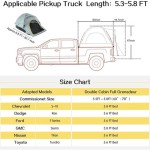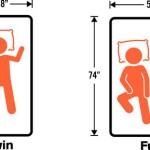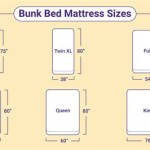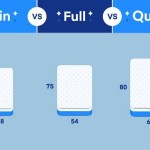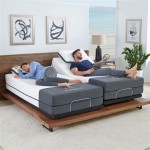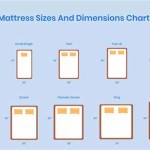```html
Size of Twin Bunk Beds: A Comprehensive Guide
Twin bunk beds are a popular and practical sleeping solution, particularly in smaller spaces or for families with multiple children. Understanding the dimensions of these beds is crucial for ensuring they fit comfortably within a room, meet safety requirements, and provide a comfortable sleeping experience for each occupant. This article provides a comprehensive overview of the standard dimensions, factors affecting size, and considerations when selecting a twin bunk bed.
Standard Dimensions of Twin Bunk Beds
The term "twin bunk bed" generally refers to a bunk bed configuration where both the upper and lower bunks are sized to accommodate a standard twin mattress. While there can be some variations depending on the manufacturer and design, the following dimensions represent the typical measurements for a twin bunk bed:
Mattress Size: The defining characteristic of a twin bunk bed is the mattress size. A standard twin mattress measures approximately 38 inches wide by 75 inches long (97 cm x 191 cm). This measurement is consistent across most manufacturers and is the primary factor determining the overall "twin" designation.
Overall Height: The height of a twin bunk bed is a critical dimension, influencing both the accessibility of the top bunk and the headroom available for the lower bunk occupant. Standard twin bunk beds typically range in height from 65 inches to 70 inches (165 cm to 178 cm). Taller models, sometimes exceeding 70 inches, might offer more headroom on the lower bunk but require higher ceilings. The height is measured from the floor to the top of the upper bunk's guardrail.
Overall Width: The overall width of a twin bunk bed is usually slightly larger than the width of the mattresses to account for the frame posts, side rails, and ladder. A typical twin bunk bed will measure between 41 inches and 43 inches wide (104 cm to 109 cm). This added width is necessary for structural stability and safety.
Overall Length: Similar to the width, the overall length of the bed is slightly longer than the mattress to accommodate the frame. The length of a standard twin bunk bed typically ranges from 78 inches to 80 inches (198 cm to 203 cm). This allows for secure placement of the mattresses and ensures structural integrity.
Space Between Bunks: The distance between the upper and lower bunks is a significant factor in comfort and usability. Sufficient space is needed to allow the lower bunk occupant to sit up comfortably and to prevent the upper bunk occupant from feeling claustrophobic. A minimum of 30 inches (76 cm) of space between the mattresses is generally recommended. Some models provide more space, enhancing comfort but also increasing the overall height of the bunk bed.
Factors Influencing Twin Bunk Bed Size
While the standard dimensions provide a general guideline, several factors can influence the actual size of a twin bunk bed:
Material and Construction: The type of material used in the construction of the bunk bed can affect its overall size. Bunk beds made of solid wood may have thicker frames compared to those made of metal, leading to slight variations in width and length. The design of the joints and connections can also contribute to these variations.
Design and Style: Different bunk bed styles can influence their dimensions. For example, a bunk bed with built-in storage drawers or a staircase instead of a ladder will have a larger footprint than a basic bunk bed frame. Loft beds, which feature a single elevated twin bed with open space underneath, will have different height requirements.
Safety Features: Bunk bed safety standards often require specific dimensions for guardrails and ladders. Guardrails must be of a certain height to prevent falls from the upper bunk, and ladders must be positioned and angled for safe climbing. These safety features can contribute to the overall dimensions of the bunk bed.
Manufacturer Variations: Different manufacturers may adhere to slightly different specifications for their twin bunk beds. It is always advisable to check the product dimensions provided by the manufacturer before making a purchase, especially if space is limited.
Mattress Thickness: While the mattress size is standard, the thickness can vary. A thicker mattress on the upper bunk can reduce the headroom available for the lower bunk occupant. Bunk beds often have a maximum recommended mattress thickness to maintain a safe guardrail height above the mattress.
Considerations When Selecting a Twin Bunk Bed Size
Choosing the right size twin bunk bed involves considering several factors beyond the standard dimensions. These factors include room size, ceiling height, user age and physical abilities, and desired features.
Room Size and Layout: Before purchasing a twin bunk bed, carefully measure the room where it will be placed. Consider the bed's footprint and ensure there is sufficient space to move around the room comfortably. Also, factor in the placement of other furniture, such as dressers, desks, and chairs.
Ceiling Height: Low ceilings can significantly impact the comfort of a bunk bed, particularly for the upper bunk occupant. Measure the ceiling height and ensure there is adequate headroom above the upper bunk mattress. A general rule of thumb is to have at least 24 inches (61 cm) of space between the top of the mattress and the ceiling.
Age and Physical Abilities: Consider the age and physical abilities of the individuals who will be using the bunk bed. Younger children may require a lower bunk bed or a bunk bed with a sturdier ladder and taller guardrails. Individuals with mobility issues may find it difficult to climb to the upper bunk.
Weight Capacity: Bunk beds have weight capacity limits for both the upper and lower bunks. Check the manufacturer's specifications to ensure the bed can safely support the weight of the occupants. Exceeding the weight limit can compromise the bed's structural integrity and safety.
Ladder or Staircase Design: The type of access to the upper bunk can influence the overall size and safety of the bunk bed. Ladders are more common and generally take up less space, but staircases offer easier and safer access, especially for younger children. However, staircases typically require more floor space.
Safety Certifications: When purchasing a twin bunk bed, look for safety certifications from reputable organizations such as the American Society for Testing and Materials (ASTM). These certifications indicate that the bed meets specific safety standards and has been tested for durability and stability.
Future Needs: Consider how the bunk bed will be used in the future. Will the children using the bed eventually outgrow it? Will the bed need to be converted into separate twin beds? Choosing a bunk bed that can adapt to changing needs can be a cost-effective solution in the long run.
By carefully considering these factors and understanding the dimensions of twin bunk beds, individuals can make informed decisions and choose a bunk bed that meets their needs for space, comfort, and safety.
```
Urtr Modern Wood Gray Twin Over Bunk Bed Size With Storage And Guard Rail For Bedroom Stairway No Box Spring Required Wyx 122g The Home

Twego Bunk Bed Magical Nest

Bunk Bed Twin Over With Size Trundle And 3 Storage Stairs Solid Wood Frame Full Length Guardrail For Boys Girls Teens

Twin Over Bunk Bed With Size Trundle And 3 Storage Stairs Walnut Old Sku Lp000064aad Atlantic Fine Furniture Inc

Anbazar Gray Twin Over And Bunk Bed With Staircases Wooden Triple Beds Drawers Guardrail For 3 Kids 01171anna E The Home

Twin Over Bunk Bed With Size Trundle Wood Frame Guard Rail And 3 Storage Stairs Staircase Can Be Installed On Right Or Left

Tween Queen Bunks Wrestler Twin Xl Over Bunk Bed With Stairs Maxtrix Kids

Ahmia Twin Over Bunk Bed With Stairs

Gx000311aak By World Wide Youth Designs Twin Over L Shaped Bunk Bed With Built In Middle Staircase White Kidzone Furniture

Built In Twin Bunk Bed Rogue Engineer

